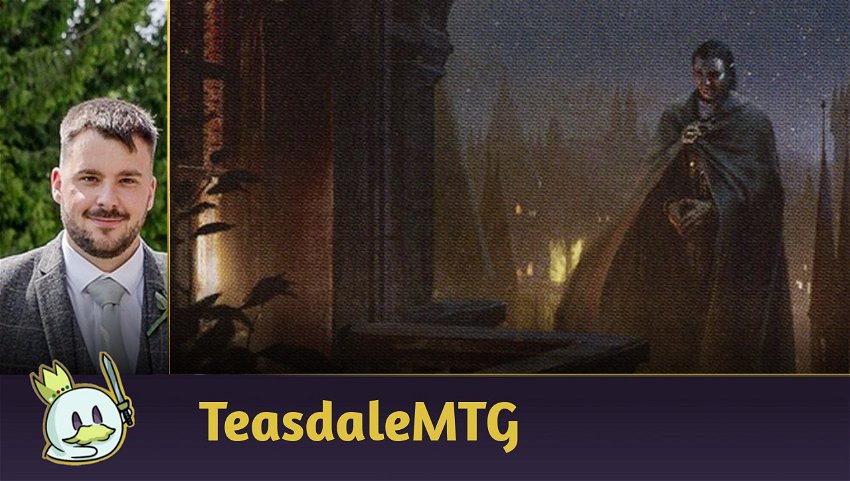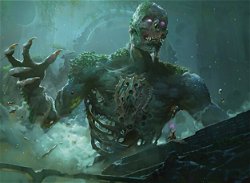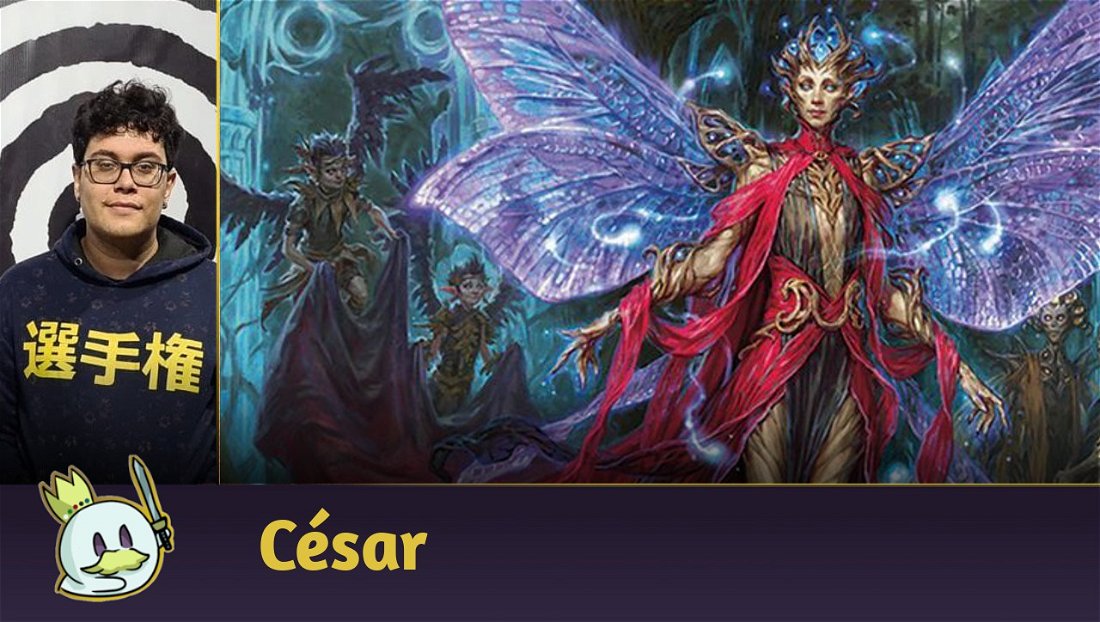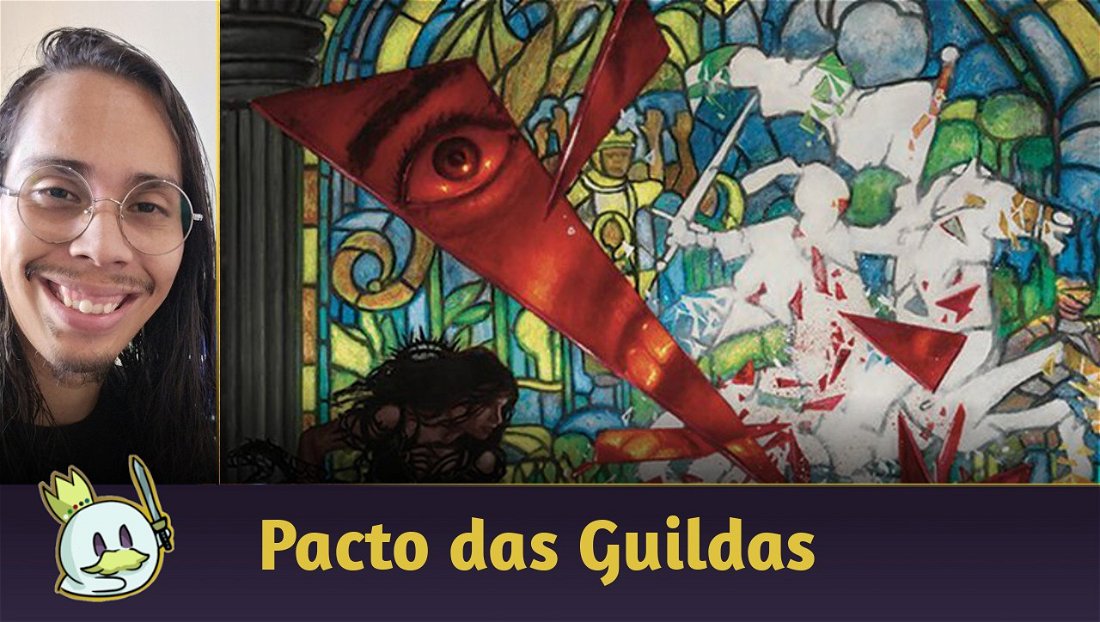Introduction
Commander Masters is out, and with it, we have a lot of powerful cards. Included in that is a new way to close games for a lot of decks. One of those decks is Spy or One Land Spy (which generally plays more than one land nowadays).

About One Land Spy Combo
The deck is centered around pulling your lands out of your deck with Generous Ent and Land Grant effects, then mill your entire deck using Balustrade Spy or Destroy the Evidence and then winning the game. Before Commander Masters, the way the deck had to win the game was Dimir House Guard, Conjurer's Bauble, Songs of the Damned, Grim Harvest and Myr Retriever.
Bauble got back the Songs, which made mana, and Myr Retriever got back the Bauble by sacrificing it to the House Guard. Once this loop had been done to make infinite mana, you swapped out the Myr Retriever for a Balustrade Spy and decked your opponent. This was not only a loop but a really convoluted way to kill the opponent.
Now, since the release of Commander Masters, you need to have access to seven mana, including three 
Why One to Three Lands in Spy
Generally, it is straightforward, since you have access to a lot more ways to find the Lands. Land Grant, Generous Ent, Troll of Khazad-dum and Abundant Harvest help you with a lot more ways to fetch mana than you need. Additionally, this also makes it easier to have access to more permanent mana sources, which allows you to potentially go off multiple times over a few turns if you face some disruption.
So, there is no set number of lands to run. Running more has benefits, as mentioned above, but running one land gives you speed, as you can combo off a lot sooner once you have grabbed that one land.
Let's look at the card choices in Three Land Spy to understand the combo a bit more in-depth.
The Maindeck
The Combo Pieces

These cards can’t really be replaced as it is the core of the deck. These pieces are crucial for the combo. Balustrade Spy is the namesake card that allows you to mill your entire deck at an incredible rate. Dimir House Guard is Balustrade Spy 5-7 just to give the deck added consistency; however, needing 3 extra mana to combo off is another reason to play the three land variation as you can easily transmute without costing you any mana producers. Destroy the Evidence is Balustrade Spy 8&9.
Dread Return and Dregscape Zombie are the enablers once you have milled yourself, which is fairly straightforward, and Lotleth Giant is the kill condition.
Crawl from the Cellar allows you to rebuy a creature once you have milled your deck. There may be certain scenarios in which you don’t have all the Dregscapes due to graveyard hate, or you need to rebuy a Balustrade Spy or a Lotleth Giant as you have tried to combo with still one land left in the deck. It is useful to include it in the deck for the low cost of one copy.
Overall, even though it is a different engine and capped at damage, I, personally, believe this is a way cleaner build of the deck than the previous list, especially in terms of time constraints on Magic Online.
The Utility

These are all mana producers for the deck. Having an incredible amount of redundancy allows you to combo off incredibly fast. You could include Rite of Flame and Wild Cantor to filter the color sources. But running the predominantly black producers, like Dark Ritual, Cabal Ritual and Songs of the Damned, really makes the deck consistent. You don’t want to not be able to combo off due to mana issues.

Running the maximum amount of free one time sources really helps get the lands out of your deck. If you have a game without Land Grant, a common play is Simian Spirit Guide or Lotus Petal, to cycle the Tree or the Troll and get the ball rolling by pulling lands out of the deck.

Since LOTR’s set has been released, the Land cyclers are a strong inclusion for numerous Pauper decks. Here is no different, for multiple reasons; these are effectively 12 copies of Land Grant when needed, but also if you are struggling to find a Balustrade Spy or don’t believe you will be able to combo off due to interaction. Casting Troll and Generous Ent is easy to do and just begin attacking.
These cards enable grabbing your lands. I believe 12 is the bare minimum to run, but Abundant Harvest is strong as they aren’t dead like Land Grant once all the lands are out of your deck, and can simply replace themselves.

Conjurer’s Bauble feels like a card that has survived the deck transformation since the release of Commander Masters. The card isn’t needed like it once was, however, it is useful once your deck has been milled. Putting back a Songs of the Damned, and drawing it immediately will give you access to usually 20+ Mana. So, again, I don’t believe it is key, but it can allow you to combo off on turns you otherwise wouldn’t be able to.
The Lands

This is fairly straightforward as there aren't many lands in the deck. But they are all Green-based, so they can be fetched with Land Grant.
One small note: Thermokarst does exist, and you are capped at how much damage your Lotleth Giant can do, so please don't play Woodland Chasm as it may come up that you have to give your opponent a life, and it could be the difference between winning and losing.
Ideal Hand & Mulligans

So, I purposely chose a hand that wasn’t going to turn one but is still very keepable. Having one Dregscape Zombie in your hand is really not the greatest, but you do have redundancy as you only need three creatures, and you can easily hard cast it.
We do have a way to pull all three Lands out of the deck, which is great. This then gives us access to Balustrade Spy through the Dimir House Guard's Transmute. This is by far a pretty slow hand as you are looking at comboing probably turn 3 or 4, or earlier if you get more mana sources like Dark Ritual or Songs of the Damned.
The Sideboard

Wooded Ridgeline is too board in if you require Flaring Pain. In my personal experience, you should board out the Forest or add it as a 4th Land. This is because you will get hands in which you can’t find them all if you draw too many Trolls if you remove a Haunted Mire.
Flaring Pain is a card that is now needed as a sideboard option in case your opponent is on Prismatic Strands or Circle of Protection: Black. As Lotleth Giant deals damage, it can easily be prevented.
Destroy the Evidence & Dimir House Guard are for decks against which you believe they will be using Counterspell or disruptive interaction. This allows you to be able to overload the opponent with Balustrade Spy effects.

Haunting Misery is the best way to get through Relic of Progenitus. So, if you have the mana to combo off, but the opponent has a Relic of Progenitus in play, you can make the mana first, and cast your Balustrade Spy effect. Priority goes back to you, so as long as you don’t do anything but cast Haunting Misery, you can exile all the creatures and kill your opponent. Due to the way this deck operates and the play to beat Relic of Progenitus, this is why four is a must-have to ensure you have access to it in your hand.
Faerie Macabre is a great free way to slow the opponent's graveyard interactions down. Either against Ephemerate loops or even the mirror.
Duress is the best way to see if the coast is clear. You may be able to snag an early Relic of Progenitus, but more often than not it is used to remove a Counterspell or Spell Pierce, allowing you to combo off.
Sideboard Guide
VS Kuldotha Red
IN:

OUT:

Like most matchups, we should be sideboarding as minimal as possible.
The reason for the inclusion of Haunting Misery is due to what we expect to see as interaction.
Currently, there are two ways in which Mono Red can interact with us;
First is by casting Lightning Bolt on our Balustrade Spy or Dregscape Zombie whilst trying to Flashback the Dread Return. This is something we can’t really do anything about. We could bring in Duress, but I believe this will dilute our game plan, and is less likely to happen as they can only really do it with four Lightning Bolt and four Lava Dart.
However, the second way is Relic of Progenitus post board and bringing in Haunting Misery stops us from being completely cold to that card.
VS UB Terror
IN:

OUT:

Bringing in Duress is to try and push through our combo past Counterspell and Spell Pierce, which can be difficult. Additionally, they could have access to Nihil Spellbomb and Rotten Reunion, which doesn’t help us comboing off either. So, keep an eye for those, and you may need to board in Haunting Misery if you go to a Game 3. If you are a game down and worried, cutting an additional Conjurer’s Bauble and Tinder Wall for 2 copies of Haunting Misery could be done, so you are not completely cold to the graveyard hate.
Tinder Wall is the card I cut because it is a mana source they can interact with, and it gives them a legal target for what is generally a dead card; Snuff Out.
VS Caw Gate
IN:

OUT:

This can be a tough matchup, as you have multiple pieces of hate you need to be conscious of. Prismatic Strands is the reason we bring in the red, as both Haunting Misery and Lotleth Giant deal damage. Haunting Misery is so we are not cold to the Relic of Progenitus they will likely board in.
VS Affinity
IN:

OUT:

Nihil Spellbomb is generally the card to be concerned about when against all forms of Affinity, so bringing in Misery allows us to give ourselves a chance against the graveyard hate.
Alternative Card Choices

There is no correct way to build this deck right now, as it just got a new win condition thanks to Commander Masters, but this is the version I have seen have most success.
I have tried lists with four copies of Exhume in to have an alternative win con. I’ve tried one land with Rite of Flame and Wild Cantor.
You can even run Street Wraith for a free draw spell that increases your creature count for Lotleth Giant.
All these cards and different variations provide different positives and negatives for the deck.
Conclusion
The deck is very fast and can kill on turn 3 or 4 very consistently, but having a gameplan against the opponent's interaction is the best way to ensure your route to victory.
This deck isn’t going to break the metagame anytime soon, but giving it more consistency so people start to pick it up is the best way to make sure it is a viable deck choice moving forward.
Until next time!














— Comentarios 0
, Reacciones 1
Se el primero en comentar